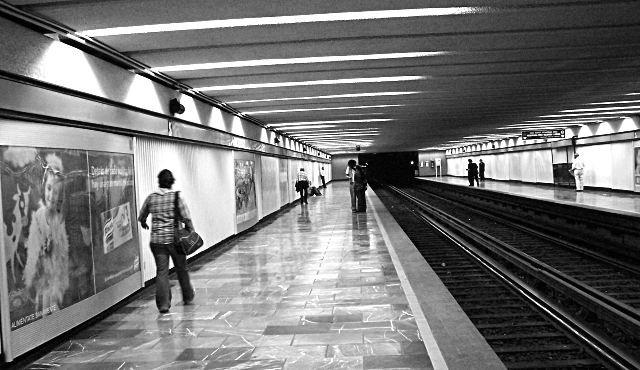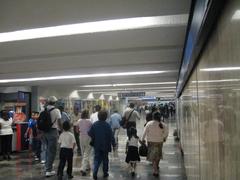
Zócalo Tenochtitlan Mexico City: Visiting Hours, Tickets, and Tourist Guide
Date: 14/06/2025
Introduction
The Zócalo—officially Plaza de la Constitución—is the monumental heart of Mexico City. As one of the largest public squares in the world, it represents centuries of history, sitting atop the ancient Aztec capital of Tenochtitlan. The Zócalo is surrounded by iconic landmarks such as the Templo Mayor, Metropolitan Cathedral, and National Palace, making it a vibrant symbol of both Mexico’s indigenous heritage and its colonial past. Today, the square is a central gathering place for celebrations, protests, and cultural events, reflecting the city’s dynamic spirit.
This detailed guide covers the Zócalo’s historical significance, practical visitor information (hours, tickets, accessibility), key sites, and insider tips, ensuring you have a memorable and informed visit to Mexico City’s historic center.
(References: mexicohistorico.com, natpacker.com, worldhistoryedu.com, h-o-m-e.org, The Broke Backpacker)
Table of Contents
- Introduction
- Tenochtitlan & the Aztec Empire: Pre-Hispanic Origins
- Spanish Conquest and Colonial Transformation
- The Zócalo’s Evolution
- Surrounding Highlights: Templo Mayor, Metropolitan Cathedral, National Palace
- Visiting Hours, Tickets, and Practical Tips
- Archaeological Discoveries and Preservation
- The Zócalo’s Contemporary Role
- Getting There: Transportation & Accessibility
- Safety, Food, and Facilities
- Events and Activities
- Frequently Asked Questions (FAQ)
- Conclusion
- References
Tenochtitlan & the Aztec Empire: Pre-Hispanic Origins
The Zócalo is built on the ruins of Tenochtitlan, the Aztec Empire’s capital founded in 1325 on an island in Lake Texcoco. By the early 16th century, Tenochtitlan was a vast metropolis with advanced urban planning, canals, and chinampas (floating gardens) nourishing a population of over 200,000 (mexicohistorico.com). At its core was the Templo Mayor, a twin pyramid temple dedicated to Huitzilopochtli and Tlaloc—central to religious ceremonies and Aztec cosmology.
Spanish Conquest and Colonial Transformation
Spanish conquistadors led by Hernán Cortés arrived in 1519, and after a brutal siege, Tenochtitlan fell in 1521. The Spanish razed much of the city, using stones from Aztec temples to construct colonial buildings. The present-day Zócalo emerged as the new city’s main plaza, surrounded by structures such as the Metropolitan Cathedral and National Palace (natpacker.com). The square quickly became the center of political, religious, and social life under Spanish rule.
The Zócalo’s Evolution
Over time, the Zócalo transformed from a colonial market and ceremonial space into a national symbol. In the 19th century, the term “zócalo” came to refer to the plaza after the unfinished base of a planned monument (natpacker.com). Restoration projects in recent decades have preserved its grandeur and improved accessibility, while archaeological excavations continue to reveal remnants of Tenochtitlan beneath the city (worldhistoryedu.com).
Surrounding Highlights
Templo Mayor
- Location: Northeast of the Zócalo
- Significance: Ruins of the main Aztec temple, including the Coyolxauhqui Stone and Tlaltecuhtli monolith
- Museum: Houses thousands of artifacts from Aztec civilization
- UNESCO Status: Part of the World Heritage-listed Historic Center (h-o-m-e.org)
Metropolitan Cathedral
- Location: North of the Zócalo
- Architecture: A blend of Gothic, Baroque, and Neoclassical styles, built from 1573 to 1813 atop the Templo Mayor ruins
- Highlights: Intricate altars, crypts, and the Altar de los Reyes (worldhistoryedu.com)
National Palace
- Location: East side of the Zócalo
- History: Built on the site of Moctezuma’s palace
- Features: Federal executive headquarters and Diego Rivera’s murals depicting Mexico’s history
Visiting Hours, Tickets, and Practical Tips
Zócalo Plaza
- Hours: Open 24/7, free to enter
- Best Times: Early mornings and weekdays are quieter; evenings and public holidays feature events
Templo Mayor & Museum
- Hours: Tuesday–Sunday, 9:00 am–5:00 pm; closed Mondays
- Tickets: ~90 MXN; free for Mexican residents on Sundays (INAH)
- Accessibility: Museum is wheelchair accessible; some uneven terrain in the ruins
Metropolitan Cathedral
- Hours: Daily, 8:00 am–8:00 pm
- Tickets: Free; small fees for bell towers/crypts with guided tours
National Palace
- Hours: Tuesday–Sunday, 9:00 am–5:00 pm; closed Mondays
- Tickets: Free with official ID; guided tours available
General Tips
- Tours: Book walking or specialized tours for deeper context and access to restricted areas
- Transport: Metro (Zócalo/Tenochtitlan Station, Line 2) is the most efficient; area is also pedestrian-friendly
- Accessibility: Ramps, paved pathways, and accessible restrooms are available
Archaeological Discoveries and Preservation
The Zócalo area is a living archaeological site, with continuous excavations revealing Aztec temples, canals, and artifacts. Preservation projects address challenges such as the city’s subsidence (due to being built on a former lakebed), ensuring the stability of historic structures like the Metropolitan Cathedral (worldhistoryedu.com).
The Zócalo’s Contemporary Role
Today, the Zócalo remains a vibrant public space—hosting national ceremonies like the “Grito de Dolores” on Independence Day, large-scale festivals such as Día de los Muertos, and frequent art installations and concerts. The square’s open expanse (200 x 240 meters) continues to unite residents and visitors in celebration and protest alike (natpacker.com).
Getting There: Transportation & Accessibility
- Metro: Zócalo/Tenochtitlan Station (Line 2) exits directly onto the plaza (The Broke Backpacker)
- Bus: Multiple city bus routes serve the Centro Histórico
- Rideshare: Uber, Didi, and taxis are widely available
- Parking: Limited; public lots nearby charge 20–30 MXN/hour
- Walking: The historic center is best explored on foot
Safety, Food, and Facilities
- Safety: The area is generally safe during the day with a visible police presence; standard precautions apply
- Facilities: Public restrooms (small fee), shaded benches, ATMs, banks, and free Wi-Fi in the square
- Food & Drink: Street vendors sell tacos, tamales, elotes, and aguas frescas; cafes and restaurants offer local and international cuisine. Markets like Mercado de San Juan provide authentic culinary experiences
Events and Activities
- Flag Ceremonies: Daily at 8:00 am and 6:00 pm
- Festivals: Independence Day, Día de los Muertos, Christmas ice rink, and more
- Performances: Aztec dancers and musicians, especially on weekends
- Tours: English and Spanish walking tours are widely available (Mexico City Official Guide)
Frequently Asked Questions (FAQ)
Q: What are the Zócalo’s visiting hours?
A: The plaza is open 24/7. Surrounding museums and monuments generally open 9:00 am–5:00 pm.
Q: Do I need tickets to enter the Zócalo?
A: No, entry is free. Museums and archaeological sites require tickets.
Q: Is the area wheelchair accessible?
A: Yes, most attractions are accessible, though some archaeological sites have uneven terrain.
Q: Is the Zócalo safe for tourists?
A: Generally yes, especially during the day. Exercise caution with valuables.
Q: Are guided tours available?
A: Yes, walking and specialized tours can be booked online or at visitor centers.
Conclusion
The Zócalo is a living crossroads of history, culture, and community—bridging the legacy of Tenochtitlan with the energy of modern Mexico City. Its vast plaza and surrounding monuments offer an immersive journey through centuries of transformation. Visitors can explore ancient ruins, marvel at colonial architecture, and participate in vibrant festivals, all while enjoying a safe and welcoming environment.
Plan your visit with the practical tips above, take advantage of accessible transportation and guided tours, and engage with the unique traditions and stories that make the Zócalo one of the world’s most remarkable urban spaces. For real-time updates and guided experiences, download the Audiala app and consult official tourism resources.
References
- The History of Mexico City: From Tenochtitlan to a Global Metropolis – mexicohistorico.com
- Zócalo Mexico City Visitor Guide – natpacker.com
- Most Significant Landmarks in Mexico City – worldhistoryedu.com
- Tenochtitlan Today – h-o-m-e.org
- Mexico City Itinerary and Visitor Info – The Broke Backpacker
- Mexico City Official Guide
- INAH – Templo Mayor Tickets
- Travel Pander – Mexico City Guide
- Mexico Travel and Leisure – Archaeological Sites











































































































































































